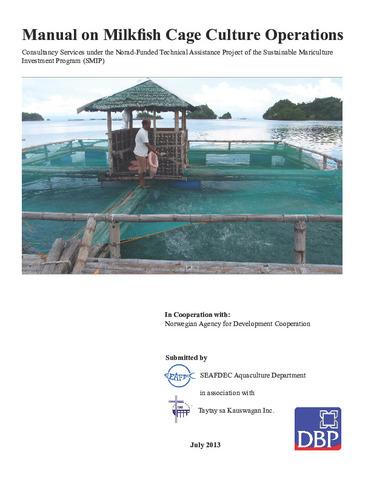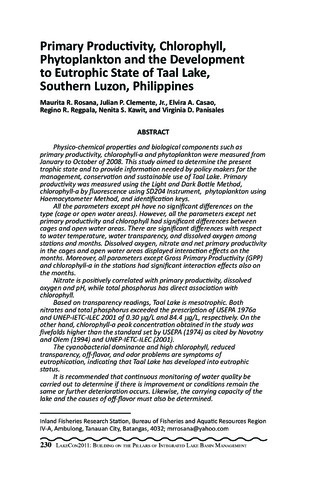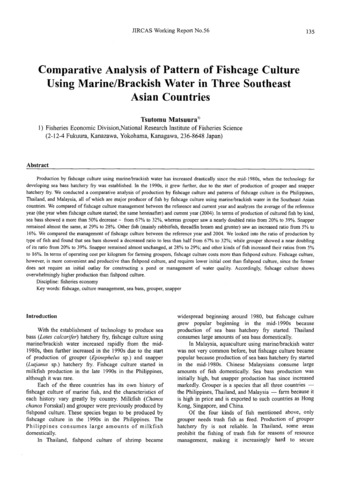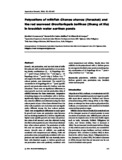Manual on milkfish cage culture operations
- Global styles
- MLA
- Vancouver
- Elsevier - Harvard
- APA
- Help

ดู/
Preview (Limited to 10 pages)
milkfish cage culture_final.pdf (9.429Mb)
 Restricted Access
Restricted Access
 Restricted Access
Restricted Access
Downloads: 6
วันที่
2013-07ผู้เขียน
Page views
9,821ASFA keyword
milkfish culture 
cage culture
fish culture
aquaculture
induced ovulation
nursery ponds
fingerlings
site selection
fish ponds
transport
water quality control
water quality
sediment
evaluation
fishery biology
cages
investment
floating cages
feeding
dissolved oxygen
pH
water temperature
salinity
Secchi discs
organic matter

cage culture

fish culture

aquaculture

induced ovulation

nursery ponds

fingerlings

site selection

fish ponds

transport

water quality control

water quality

sediment

evaluation

fishery biology

cages

investment

floating cages

feeding

dissolved oxygen

pH

water temperature

salinity

Secchi discs

organic matter

AGROVOC keyword
Taxonomic term
เมตาดาต้า
แสดงระเบียนรายการเต็ม
Share
นามธรรม
Milkfish (Chanos chanos, or bangus) culture is the largest finfish aquaculture industry in the Philippines and continues to be a top aquaculture commodity primarily because it is easy to culture and can be grown in a wide range of environments. Milkfish thrives in freshwater, brackishwater, marine, and even hypersaline habitats. Milkfish production is increasing rapidly with much of the production moving away from the traditional culture in brackishwater ponds to fish cages in coastal marine waters. To provide a general view of the milkfish culture industry, brief descriptions on breeding, hatchery production, and nursery operation are included in this manual. This manual is meant to serve as a guide for those interested to venture into marine cage farming of milkfish.
Milkfish culture has been practiced in the Philippines, Indonesia, and Taiwan for centuries and has been the focus of aquaculture research in a number of institutions for several decades. Innovations in culture practices as a result of information from research data and from farmer’s experiences have been adopted by industry practitioners and these are documented in the recently published book entitled Milkfish Aquaculture in Asia (Liao and Leano, 2010). The recent concern about the rapid growth of aquaculture and its possible environmental impacts, and risks that can threaten the sustainability of this expanding industry has also been the subject of many conferences to develop good management practices in aquaculture. Principles and guidelines on better management practices in marine finfish culture had been drafted and included in this manual.
การอ้างอิง
SEAFDEC/AQD. (2013). Manual on milkfish cage culture operations. Aquaculture Department, Southeast Asian Fisheries Development Center.
Type
Bookคอลเลกชัน
Related items
Showing items related by title, author, creator and subject.
-
Series: Summary of Proceedings No. 1/2013;
Primary productivity, chlorophyll, phytoplankton and the development to eutrophic state of Taal Lake, southern Luzon, Philippines
Rosana, Maurita R.; Clemente Jr., Julian P.; Casao, Elvira A.; Regpala, Regino R.; Kawit, Nenita S.; Panisales, Virginia D. (PCAARRD-DOST, 2013)Physico-chemical properties and biological components such as primary productivity, chlorophyll-a and phytoplankton were measured from January to October of 2008. This study aimed to determine the present trophic state and ... -
Series: JIRCAS Working Report; No. 56
Comparative analysis of pattern of fishcage culture using marine/brackish water in three Southeast Asian countries
Matsuura, Tsutomu (Japan International Research Center for Agricultural Sciences, 2007)Production by fishcage culture using marine/brackish water has increased drastically since the mid-1980s, when the technology for developing sea bass hatchery fry was established. In the 1990s, it grew further, due to the ... -
Polyculture of milkfish Chanos chanos (Forsskal) and the red seaweed Gracilariopsis bailinae (Zhang et Xia) in brackish water earthen ponds
Guanzon, Nicolas G., Jr.; de Castro-Mallare, Teresa R.; Lorque, Felizardo M. (Wiley-Blackwell, 2004)Growth, net production, and survival rates of milkfish cultured with Gracilariopsis bailinae at two stocking density combinations (T1– 30 fingerlings 100-m−2 pond+1-kg G. bailinae 4-m−2 net ...




